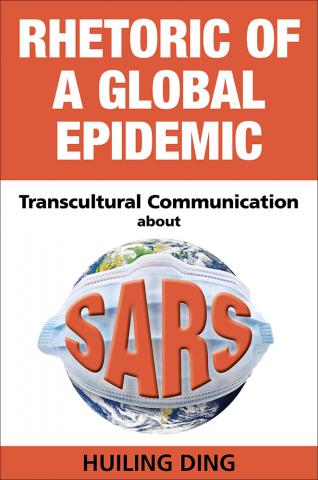By SIU Press
From 2014:
“In the past 10 years, we have seen great changes in the ways government organizations and media respond to and report on emerging global epidemics. The first outbreak to garner such attention was SARS (severe acute respiratory syndrome). In Rhetoric of a Global Epidemic, Huiling Ding uses SARS to explore how various cultures and communities made sense of the epidemic and communicated about it. She also investigates the way knowledge production and legitimation operate in global epidemics, the roles that professionals and professional communicators, as well as individual citizens, play in the communication process, points of contention within these processes, and possible entry points for ethical and civic intervention.”

“Focusing on the rhetorical interactions among the World Health Organization, the United States, China, and Canada, Rhetoric of a Global Epidemic investigates official communication and community grassroots risk tactics employed during the SARS outbreak. It consists of four historical cases, which examine the transcultural risk communication about SARS in different geopolitical regions at different stages. The first two cases deal with risk communication practices at the early stage of the SARS epidemic when it originated in southern China. The last two cases move to transcultural rhetorical networks surrounding SARS.
“With such threats as SARS, avian flu, and swine flu capturing the public imagination and prompting transnational public health preparedness efforts, the need for a rhetoric of global epidemics has never been greater. Government leaders, public health officials, health care professionals, journalists, and activists can learn how to more effectively craft and manage transcultural risk communication from Ding’s examination of the complex and varied modes of communication around SARS.
“In addition to offering a detailed case study, Rhetoric of a Global Epidemic provides a critical methodology that professional communicators can use in their investigations of epidemics and details approaches to facilitating more open, participatory risk communication at all levels.”
–
Rhetoric of a Global Epidemic: Transcultural Communication about SARS won the National Council of Teachers of English Conference on College Composition and Communication 2016 Best Book Award in Technical and Scientific Communication.
–
From Inside Higher Ed:
“It is a work of some factual and conceptual density, but I suspect it will play some role in how information about disease outbreaks will be organized and delivered in the future . . .
“My research,” Ding said in an e-mail interview, “shows different values and practices of traditional newspapers housed in Beijing and Guangzhou (mainstream and commercial ones) despite the exertion of censorship during the early stage of SARS.”
“The People’s Daily, official mouthpiece of the Chinese leadership, remained silent on the health crisis until as late as March 2003. But by January 2003, regional newspapers in small cities began reporting on the panic-buying of antiviral drugs and surgical masks – information that then became known elsewhere in the country, via the Internet, as well as to ‘overseas Chinese’ around the world, well before the crisis was international news.”
–
Comments welcome.
Posted on April 28, 2020


